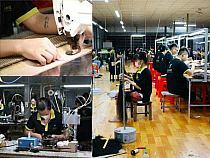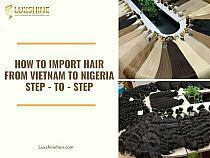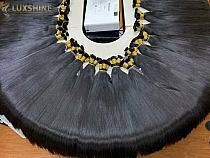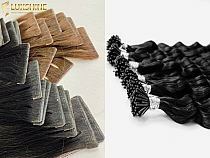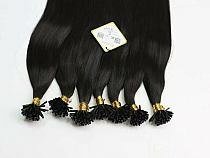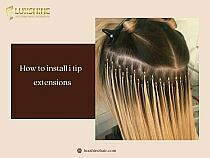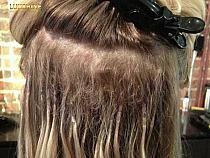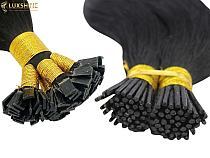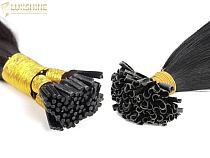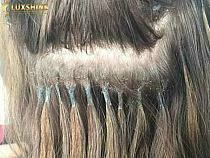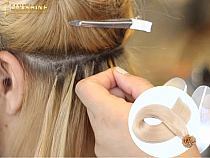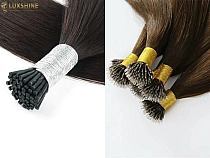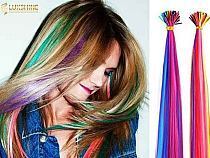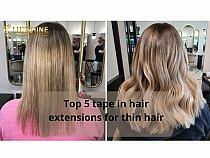-
Inspiracje
- Najnowsze
- Najpopularniejsze
- Zaskocz mnie
- Obserwowane
- MAGazyn
- Moda damska
- DIY - zrób to sam
- Kuchnia
- Uroda
- Wnętrza
- Humor
- Ogród
- Ślub
- Architektura
- Biżuteria
- Design
- Dziecko
- Film
- Fotografia
- Gadżety
- Historia
- Hobby
- Inne
- Książka
- Moda męska
- Muzyka
- Nauka i natura
- Plakaty i obrazy
- Podróże i miejsca
- Samochody i motocykle
- Sport i fitness
- Święta i uroczystości
- Tatuaż
- Zwierzęta
- Partnerzy
- KONKURS
-
Zakupy
-
ONA
- Ubrania
- Bielizna
- Bluzki
- Bluzy
- Dresy damskie
- Kombinezony
- Koszule
- Koszulki
- Kurtki
- Płaszcze
- Spodnie i leginsy
- Spodnie jeans
- Spódnice
- Stroje kąpielowe
- Sukienki i tuniki
- Swetry
- Szorty
- Zestawy
- Żakiety i kamizelki
- Buty
- Baleriny
- Botki
- Czółenka
- Espadryle
- Glany
- Japonki
- Kalosze
- Klapki
- Koturny
- Kowbojki
- Kozaki
- Obuwie Domowe
- Półbuty
- Sandały
- Sportowe i lifestyle
- Szpilki
- Tenisówki i Trampki
- Trapery i trekkingi
- Dodatki
- Bransoletki i zawieszki
- Breloki
- Czapki i kapelusze
- Etui
- Kolczyki, nausznice
- Kołnierzyki
- Kosmetyczki
- Naszyjniki, kolie i zawieszki
- Okulary
- Ozdoby do włosów
- Parasole
- Paski
- Pierścionki
- Plecaki
- Portfele
- Rękawiczki
- Skarpety
- Szaliki i chusty
- Torby i torebki
- Walizki
- Zegarki
- Zestawy biżuterii
- Zdrowie i uroda
- Akcesoria kosmetyczne
- Balsamy
- Bazy i podkłady
- Cienie do oczu
- Dezodoranty
- Higiena jamy ustnej
- Korektory
- Kredki
- Kremy i serum
- Lakiery
- Manicure i pedicure
- Maseczki
- Odżywki
- Peeling
- Perfumy i wody perfumowane
- Pielęgnacja po opalaniu
- Płyny żele i mydła
- Pomadki i błyszczyki
- Pudry
- Róże
- Stylizacja włosów
- Szampony
- Toniki i demakijaż
- Tusze
- Wody toaletowe
- Zestawy
-
ON
- Ubrania
- Bielizna
- Bluzy
- Kąpielówki
- Koszule
- Kurtki i płaszcze
- Marynarki kamizeki
- Spodenki i szorty
- Spodnie
- Swetry
- T-shirt długi rękaw
- T-shirt i Polo
- KULTURA
- GADŻETY
- DZIECKO
-
DOM I WNĘTRZE
- Wnętrza
- Akcesoria dom
- Do baru
- Do biura
- Do kuchni
- Kubki kufle i kieliszki
- Lustra
- Nakrycia stołu
- Oświetlenie
- Plakaty i tablice
- Pościele, poduszki i nakrycia
- Przechowywanie
- Tekstylia
- Zegary i budziki
-
Marki
- MARKI
- Adidas
- Adriatica
- Alter Core
- Armani
- Asics
- Atlantic
- Azzaro
- Barbie
- Bburago
- Be-U
- Benetton
- Bering
- Black Plum
- Burberry
- Bvlgari
- Cacharel
- Calvin Klein
- Canon
- Carolina Herrera
- Carrera
- Casio
- Celestron
- Chanel
- Chloe
- Clinique
- Cobi
- Coloud
- Converse
- David Beckham
- Davidoff
- Delbana
- Diesel
- Dior
- DISNEY
- DKNY
- Dolce & Gabbana
- DOXA
- Dr. Martens
- Dunhill
- Ecco
- Elizabeth Arden
- Esprit
- EVC DSGN
- Festina
- Fila
- Fisher Price
- Frederique Constant
- Givenchy
- Gucci
- Guerlain
- Guess
- Hasbro
- Helena Rubinstein
- Hermes
- Hi-Tec
- Hugo Boss
- Hunter
- Iceberg
- Ingersoll
- Issey Miyake
- Jean Paul Gaultier
- Jennifer Lopez
- Jil Sander
- Jimmy Choo
- Joop!
- Juicy Couture
- Kappa
- Kenzo
- Komono
- Lacoste
- Lalique
- Lancome
- Lanvin
- Lee
- Lego
- Lorus
- Marc Jacobs
- Marshall
- Masaki Matsushima
- Matchbox
- Mattel
- Max Factor
- Max&Co
- Mc Arthur
- Mizuno
- Mont Blanc
- Moschino
- Mr. Gugu & Miss Go
- My Little Pony
- New Balance
- Nike
- Nikon
- Nina Ricci
- Ninety Eight Clothing
- Nivea
- Nixon
- Nooka
- Obaku
- Onitsuka Tiger
- Paco Rabanne
- Pentax
- Pewex
- Pierre Cardin
- Playboy
- Prada
- Puma
- Ralph Lauren
- Reebok
- Regatta
- Revlon
- Rexona
- Rider
- Salomon
- Salvatore Ferragamo
- Shelyak
- Shiseido
- Skagen
- Swarovski
- Takahashi
- Thierry Mugler
- Timberland
- Timex
- Tommy Hilfiger
- UGC
- Urbanears
- Valentino
- Vans
- Versace
- Viktor & Rolf
- Vixen
- Welly
- William Optics
- Wrangler
- Yimaida
- Yukon
- Yves Saint Laurent
-
ONA
-
Szukaj
- Losuj
Inne
Luxshine Hair Extensions
Keratin extensions have surged in popularity, becoming one of the most sought-after types of hair extensions in recent years. The allure of these extensions lies not only in their ease of use but also in the seamless, natural look they afford. With a diverse array of shapes available – from the classic I and V shapes to the more unconventional Y, U, and flat variations – keratin extensions cater to a wide spectrum of consumer preferences, ensuring that there's a perfect fit for everyone.
However, despite their widespread appeal, the cost of keratin extensions remains a significant concern for many individuals. In this comprehensive blog post, we aim to delve deeply into this topic, providing valuable insights into the factors that influence the pricing of keratin extensions.
To fully grasp the intricacies of this discussion, we encourage you to read through the entirety of this blog. By doing so, you'll uncover essential information that will empower you to make informed decisions regarding your hair extension choices.
Let's begin by exploring the various components that contribute to the overall cost of keratin extensions:
Quality of Hair: The quality of the hair used in keratin extensions plays a pivotal role in determining their price. Ranging from synthetic fibers to natural human hair, the quality of the hair directly impacts its durability, texture, and overall appearance. Human hair extensions, particularly those sourced from premium donors, command a higher price due to their superior quality and longevity.
Extension Length and Thickness: The length and thickness of keratin extensions also influence their cost. Longer extensions and those with greater volume require more hair material, resulting in higher production costs. Additionally, thicker extensions typically require additional layers of keratin bonds for secure attachment, contributing further to their price.
Installation Technique: The method used to install keratin extensions can vary significantly, with different techniques requiring varying levels of skill, time, and resources. Traditional methods such as fusion bonding or pre-bonded keratin extensions may be more labor-intensive and time-consuming, thus affecting their price compared to newer, more streamlined techniques like tape-in or micro-link extensions.
Salon Expertise and Location: The expertise of the salon professionals performing the extension application and the geographical location of the salon can also impact the overall cost. High-end salons with experienced stylists located in metropolitan areas often command higher service fees, reflecting the skill level and overhead costs associated with their services.
Maintenance and Upkeep: It's essential to consider the ongoing maintenance and upkeep required for keratin extensions when assessing their cost. Regular maintenance appointments for re-bonding or adjustments, as well as specialized hair care products tailored for extension maintenance, are additional expenses that should be factored into the overall budget.
By carefully evaluating these key factors, you can gain a clearer understanding of the cost dynamics associated with keratin extensions. Armed with this knowledge, you'll be better equipped to navigate the market and make informed decisions that align with your preferences and budgetary constraints.
In conclusion, while the cost of keratin extensions may initially seem daunting, it's important to recognize that various factors contribute to their pricing. By weighing these factors thoughtfully and considering your individual needs and preferences, you can invest in keratin extensions that not only enhance your natural beauty but also provide long-lasting value and satisfaction.
Link post: https://luxshinehair.com/keratin-extensions-cost/
However, despite their widespread appeal, the cost of keratin extensions remains a significant concern for many individuals. In this comprehensive blog post, we aim to delve deeply into this topic, providing valuable insights into the factors that influence the pricing of keratin extensions.
To fully grasp the intricacies of this discussion, we encourage you to read through the entirety of this blog. By doing so, you'll uncover essential information that will empower you to make informed decisions regarding your hair extension choices.
Let's begin by exploring the various components that contribute to the overall cost of keratin extensions:
Quality of Hair: The quality of the hair used in keratin extensions plays a pivotal role in determining their price. Ranging from synthetic fibers to natural human hair, the quality of the hair directly impacts its durability, texture, and overall appearance. Human hair extensions, particularly those sourced from premium donors, command a higher price due to their superior quality and longevity.
Extension Length and Thickness: The length and thickness of keratin extensions also influence their cost. Longer extensions and those with greater volume require more hair material, resulting in higher production costs. Additionally, thicker extensions typically require additional layers of keratin bonds for secure attachment, contributing further to their price.
Installation Technique: The method used to install keratin extensions can vary significantly, with different techniques requiring varying levels of skill, time, and resources. Traditional methods such as fusion bonding or pre-bonded keratin extensions may be more labor-intensive and time-consuming, thus affecting their price compared to newer, more streamlined techniques like tape-in or micro-link extensions.
Salon Expertise and Location: The expertise of the salon professionals performing the extension application and the geographical location of the salon can also impact the overall cost. High-end salons with experienced stylists located in metropolitan areas often command higher service fees, reflecting the skill level and overhead costs associated with their services.
Maintenance and Upkeep: It's essential to consider the ongoing maintenance and upkeep required for keratin extensions when assessing their cost. Regular maintenance appointments for re-bonding or adjustments, as well as specialized hair care products tailored for extension maintenance, are additional expenses that should be factored into the overall budget.
By carefully evaluating these key factors, you can gain a clearer understanding of the cost dynamics associated with keratin extensions. Armed with this knowledge, you'll be better equipped to navigate the market and make informed decisions that align with your preferences and budgetary constraints.
In conclusion, while the cost of keratin extensions may initially seem daunting, it's important to recognize that various factors contribute to their pricing. By weighing these factors thoughtfully and considering your individual needs and preferences, you can invest in keratin extensions that not only enhance your natural beauty but also provide long-lasting value and satisfaction.
Link post: https://luxshinehair.com/keratin-extensions-cost/
MA==
Podobne inspiracje
1
Synthetic wigs have revolutionized the world of hairsty…
Hair factories in Vietnam have earned a stellar reputat…
Vietnamese hair has garnered widespread recognition wit…
Have you ever wondered how to buy hair from Vietnam to…
Are you contemplating the selection of a hair distribut…
Vietnamese hair has emerged as a symbol of high-end sta…
Vietnamese Raw hair stands out as a highly coveted comm…
Are you tired of feeling dissatisfied with the length a…
Keratin tip hair extensions have gained widespread popu…
Vietnamese hair has earned its reputation as one of the…
In this contemporary era, the quest for beauty is a pas…
In today's fast-paced society, the definition of b…
In today's modernized world, where self-expression…
Transform Your Look with Keratin I Tip Hair Extensions…
When contemplating hair extensions, one often ponders,…
In today's modern culture, women's pursuit of…
Thinning hair is a common concern that many individuals…
1
I-tip hair extensions have become a staple accessory in…
Keratin, a key structural protein abundant in hair, nai…
Keratin hair extensions have emerged as a popular choic…
Hair extensions are undoubtedly a transformative tool f…
In today's society, the pursuit of beauty has beco…
Hair conditions such as thin, fine, thick, and short ha…
Hair styling has always been a form of self-expression,…
I-tip hair extensions are a fantastic way to add length…
In the vast realm of hair extensions, one particular ty…
Keratin extensions offer a multitude of benefits that a…
Hair extensions have become an increasingly popular met…
Are you too comfortable with your keratin hair extensio…
Brazilian hair has become an epitome of luxury, synonym…
Hair extensions have become increasingly popular in the…
Choosing the right type of hair extensions can be a dau…
U tip, or nail tip, extensions offer a tempting solutio…
Selecting the appropriate shampoo for your keratin exte…
Hair extensions offer a convenient solution for those l…
Thin hair can often feel like a curse, especially for w…
In the wig industry, the United States market is witnes…
Stepping out of youthful age, our womankind becomes muc…
My friends often comment on my hair, saying things like…
When it comes to black women's hairstyles, our min…




